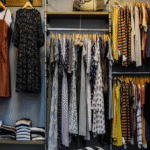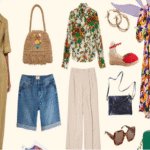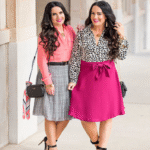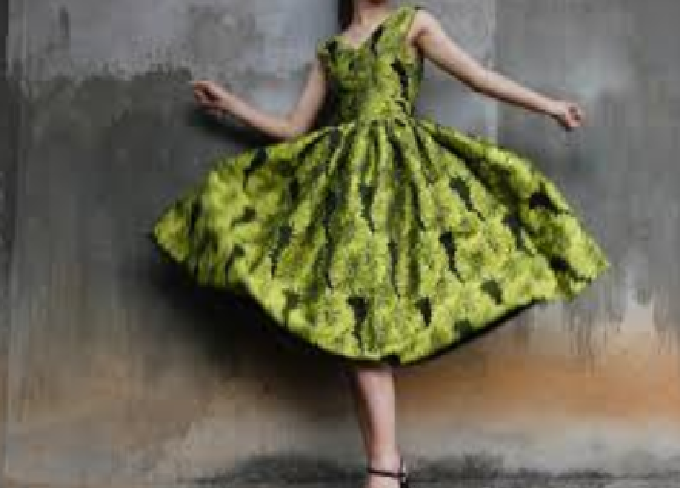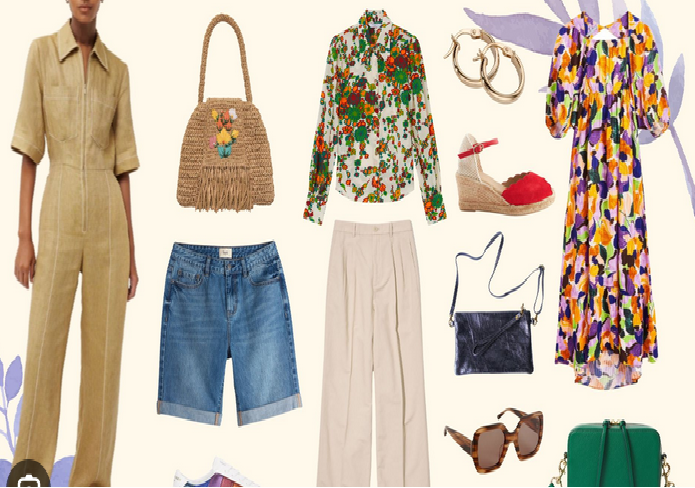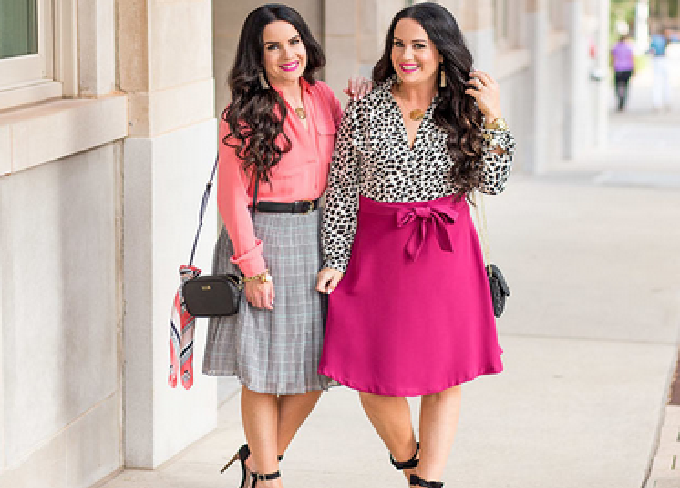In today’s ever-evolving fashion world, sustainability has become more than just a buzzword—it’s a lifestyle choice. Women across the globe are now rethinking their wardrobes and opting for clothing that not only looks stylish but also supports the planet. Sustainable fashion is all about making conscious choices that reduce waste, minimize pollution, and promote ethical production. It’s a movement that merges style with responsibility, proving that you don’t have to sacrifice your chic look to stay eco-friendly.
This article will explore how women can embrace sustainable fashion, from selecting the right fabrics to supporting ethical brands, while still looking effortlessly stylish.
Understanding Sustainable Fashion
Before diving into how to dress sustainably, it’s essential to understand what sustainable fashion truly means. Sustainable fashion refers to clothing and accessories designed, manufactured, distributed, and used in ways that are environmentally and socially responsible.
It aims to address the full life cycle of a garment—from fabric sourcing and production to usage and disposal. This includes:
-
Reducing carbon footprint during manufacturing
-
Using organic or recycled materials
-
Ensuring fair wages and safe working conditions for garment workers
-
Promoting longevity and timeless style over fast-changing trends
By choosing sustainable fashion, women contribute to a cleaner planet and a more ethical fashion industry.
Why Sustainable Fashion Matters
Fashion is one of the largest polluting industries in the world. Every year, millions of tons of textile waste end up in landfills, and synthetic fibers release microplastics into the oceans. Fast fashion, with its rapid production cycles and low-cost garments, has worsened this crisis.
By shifting toward sustainable choices, women can help:
-
Reduce Environmental Impact – Eco-friendly fabrics like organic cotton and linen use less water and fewer chemicals.
-
Support Ethical Labor Practices – Many sustainable brands ensure fair wages and safe working conditions.
-
Encourage Circular Fashion – Reusing, recycling, and upcycling clothing extends garment life.
-
Promote Quality over Quantity – Investing in well-made pieces saves money in the long run.
Sustainable fashion empowers women to look good, feel good, and do good—all at the same time.
Building a Sustainable Wardrobe
Creating an eco-friendly wardrobe doesn’t mean throwing away everything you own. Instead, it’s about making smarter decisions moving forward. Here are practical steps to help you build a sustainable closet.
1. Start with a Wardrobe Audit
The first step is to assess what you already have. Go through your closet and separate clothes into categories: keep, donate, repurpose, or recycle. Many women are surprised to find forgotten gems hiding in their wardrobes. By understanding what you own, you can avoid unnecessary purchases and make better use of existing items.
2. Invest in Timeless Pieces
Trends come and go, but classic styles never fade. Focus on timeless pieces that you can wear season after season. Examples include:
-
A well-fitted blazer
-
A crisp white shirt
-
A little black dress
-
High-quality jeans
-
Neutral-colored trousers
Timeless fashion not only minimizes waste but also helps you build a cohesive wardrobe that always looks elegant.
3. Choose Sustainable Fabrics
Fabric choice plays a huge role in sustainable fashion. Opt for materials that are organic, recycled, or biodegradable. Here are some excellent eco-friendly fabric options:
-
Organic Cotton: Grown without harmful pesticides or synthetic fertilizers.
-
Linen: Made from flax plants, it’s durable and requires less water.
-
Hemp: One of the most sustainable crops with minimal environmental impact.
-
Tencel (Lyocell): A soft fabric made from wood pulp through an eco-friendly process.
-
Recycled Fabrics: Made from post-consumer waste like plastic bottles or old clothing.
These fabrics not only reduce environmental harm but also feel luxurious on the skin.
4. Support Ethical and Local Brands
Research and choose brands that prioritize sustainability. Many local designers now focus on small-scale production, using eco-friendly materials and fair-trade practices. Buying from local artisans also reduces shipping emissions and supports community economies.
Look for brands that provide transparency about their production processes and materials.
5. Buy Less, Choose Better
One of the simplest rules for sustainable fashion is to buy less. Instead of impulsively shopping every season, focus on quality. A well-made dress might cost more upfront but will last for years compared to a fast-fashion alternative that fades after a few washes.
Think of your wardrobe as an investment in both your personal style and the environment.
Eco-Friendly Fashion Tips for Everyday Style
Adopting sustainable fashion doesn’t mean sacrificing your sense of style. Here’s how to stay chic while being eco-conscious.
1. Mix and Match Creatively
Learn the art of styling your existing clothes in new ways. Layering, accessorizing, and combining pieces can create multiple looks from the same wardrobe. For example, a basic white dress can transform from casual daytime wear to elegant evening attire with a belt, statement jewelry, and heels.
2. Rent or Swap Clothes
If you love experimenting with different styles, consider renting outfits for special occasions or organizing clothing swaps with friends. Fashion rental platforms and swap events are eco-friendly alternatives that allow you to enjoy variety without overconsumption.
3. Buy Secondhand or Vintage
Thrift stores and online resale platforms are treasure troves for unique and affordable finds. Vintage clothing not only tells a story but also helps reduce waste by giving garments a second life.
Shopping secondhand is one of the most effective ways to practice sustainable fashion while still looking chic and individualistic.
4. Take Care of Your Clothes
Extending the lifespan of your clothes is one of the most sustainable things you can do. Follow proper washing instructions, air-dry instead of machine-drying, and store garments correctly. Learning simple repairs—like sewing a button or fixing a small tear—can also keep your clothes wearable for longer.
5. Accessorize Sustainably
Accessories play a huge role in elevating your style. Choose jewelry, bags, and shoes made from eco-friendly materials such as recycled metals, cork, or vegan leather. Many sustainable accessory brands now offer stylish options without compromising ethics or quality.
The Role of Color and Minimalism in Sustainable Style
When curating a sustainable wardrobe, color palette matters. Opting for neutral tones—like beige, white, navy, black, and olive—allows for easy mixing and matching. This reduces the need for excessive pieces while maintaining a sophisticated look.
Minimalism also goes hand in hand with sustainability. Owning fewer, high-quality pieces helps declutter your life and sharpen your fashion sense. The minimalist approach promotes thoughtful consumption and timeless elegance.
Trends in Sustainable Fashion for Women
Sustainability is reshaping the fashion industry. Here are some current trends that women can embrace to stay fashionable and eco-conscious.
1. Upcycled and Reworked Fashion
Designers are increasingly turning to upcycling—transforming old or unused garments into new creations. This not only reduces textile waste but also adds a unique, artistic touch to each piece.
2. Vegan Leather and Plant-Based Textiles
Vegan leather made from pineapple leaves, cactus, or apple peels has gained popularity. These materials mimic the look and feel of traditional leather without harming animals or the planet.
3. Capsule Wardrobes
A capsule wardrobe consists of a limited number of versatile pieces that can be mixed and matched to create various outfits. It’s a minimalist and sustainable approach to dressing that saves time, money, and space.
4. Slow Fashion Movement
The slow fashion movement emphasizes mindful purchasing and long-lasting quality. It encourages consumers to value craftsmanship, ethical production, and durability over cheap mass-produced clothing.
5. Digital Fashion and Virtual Try-Ons
Technology is playing a big role in sustainability. Virtual fitting rooms and digital fashion apps help reduce returns and overproduction. Women can now try out outfits digitally before buying, minimizing waste and unnecessary shipping.
Sustainable Fashion Icons and Inspirations
Several influential women are championing sustainable fashion, inspiring others to follow. Celebrities, designers, and influencers are showing that eco-friendly can be glamorous.
For example, many red-carpet appearances now feature dresses made from recycled materials or vintage couture. This global shift shows that sustainability and luxury can coexist beautifully.
Sustainable Fashion on a Budget
Many women believe sustainable fashion is expensive, but it doesn’t have to be. Here’s how to build an eco-friendly wardrobe without overspending:
-
Shop Secondhand: Thrift stores and resale apps offer stylish pieces at affordable prices.
-
DIY and Upcycle: Transform old clothes into new designs with creativity and basic sewing.
-
Buy During Sales: Many sustainable brands offer discounts seasonally.
-
Borrow or Rent: For one-time occasions, renting is cost-effective and eco-friendly.
-
Follow Minimalism: The fewer items you buy, the more you save and the less waste you create.
A mindful approach can make sustainable fashion both accessible and affordable.
How to Identify Truly Sustainable Brands
With “greenwashing” becoming common, it’s important to identify authentic sustainable brands. Look for:
-
Transparency: Brands that openly share sourcing, materials, and manufacturing details.
-
Certifications: Labels like GOTS (Global Organic Textile Standard), Fair Trade, or OEKO-TEX indicate genuine sustainability.
-
Ethical Practices: Fair wages, safe working conditions, and community involvement.
-
Recycling Initiatives: Brands that offer take-back programs or use recycled packaging.
Doing a bit of research ensures your purchases align with your values.
The Future of Women’s Sustainable Fashion
The future of fashion is green. As awareness grows, more women are embracing sustainable lifestyles. Innovations like biodegradable fabrics, 3D printing, and AI-driven production are revolutionizing how clothing is made and consumed.
Brands are now realizing that sustainability isn’t a trend—it’s the future. Consumers, especially women, hold the power to shape this future by making conscious choices and demanding accountability from fashion companies.
Conclusion: Be Chic, Be Conscious
Sustainable fashion for women isn’t about perfection—it’s about progress. Every small choice, from the fabric you wear to the brand you support, makes a difference. Dressing chic and eco-friendly is entirely possible when you prioritize quality, versatility, and ethics.
By embracing sustainability, women can express their style confidently while helping preserve the planet for future generations. Fashion doesn’t have to cost the Earth—it can help save it.

